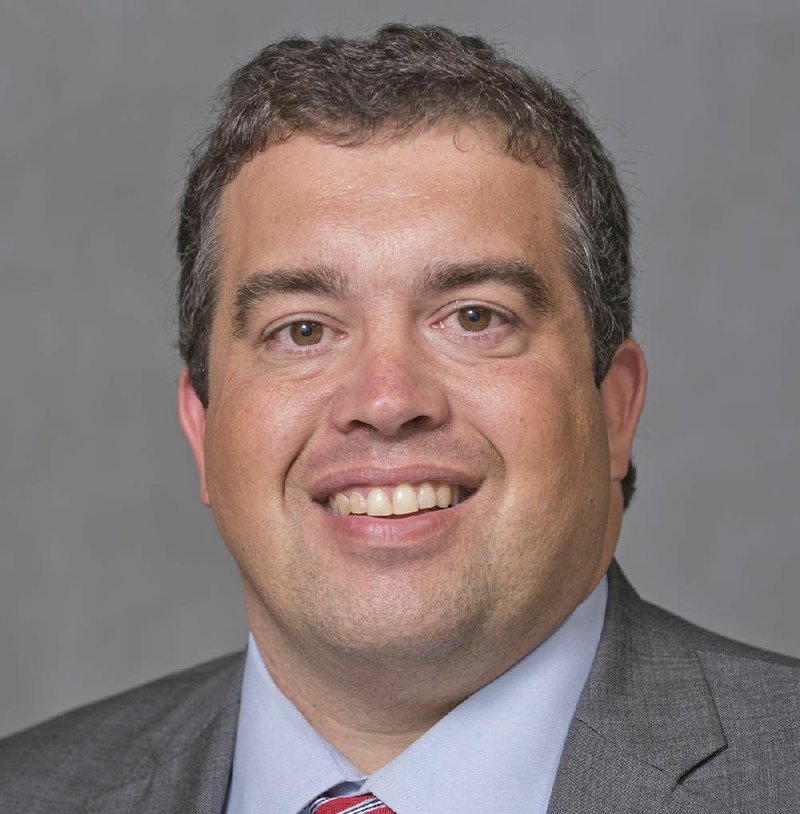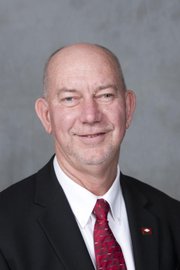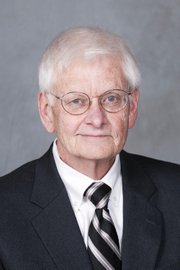A group of lawmakers is finishing an influential report that will have a large role in determining how much money public schools will receive from the state.
There is already broad agreement on one change that would affect how more than $150 million is divvied up among school districts to pay for transportation.
School districts now each receive the same amount of money per student to provide transportation, but lawmakers on the panel are embracing a change that would fund the use of school buses based on their actual costs. That change would decrease funding in urban districts -- such as Little Rock and those in Northwest Arkansas -- but help rural districts that spend more on busing than the state provides.
"We would be funding it the way it needs to be funded," House Education Committee Chairman Bruce Cozart, R-Hot Springs, said during a committee work session. The House and Senate Education committees are holding the joint meetings.
Still up for debate is how much additional state funding schools should receive for their overall budgets. Cozart has suggested increasing per-student spending by 1.15 percent in fiscal 2018, though he said everyone on the committee should come up with their own alternatives to discuss.
The state spends more than $3 billion each year to educate students from kindergarten through 12th grade, so a change of 1 percent or 2 percent in funding has a multimillion-dollar impact on the state's budget.
Some Democrats have said school needs greater than what a 1.15 percent increase -- about $35 million a year -- can provide.
No matter the size of any increase, lawmakers have debated what flexibility schools should have in how they spend additional state money. Traditionally, the state funds -- currently $6,646 per student per school year -- have come with recommendations, but not requirements, from the state about how they should be used.
Now, some committee members are looking to change that by putting increases in funding toward restricted accounts aimed at specific goals. However, a loss of local control has galled others, who say schools know best what their needs are.
The state ranks No. 31 in the nation for per-student funding. On average, Arkansas spent $9,538 per student in the 2012-13 school year, according to a draft report. That number includes contributions from federal, state and local governments.
A final report is due Nov. 1. The Legislature begins meeting in regular session in January, and must vote on the report during the session.
Transportation
The funds the state provides to transport students to and from school is not tied to the cost for doing so. Cozart -- along with House Minority Leader Michael John Gray, D-Augusta, and other lawmakers -- want to change that.
Each school receives $321.20 per student for transportation, but students cost different amounts to transport.
Some are concentrated in urban areas and cheaper to transport. Others are spread out in rural areas and take more time and fuel to pick up.
The result is that one urban district spent about $126.80 per student on transportation, while another rural district spent about $1,058.60 per student, according to a draft report from the joint education committees.
Ultimately, a change would mean less money for urban districts -- which use the excess funds for other needs -- and more money for rural districts -- where dollars from other priorities have to be redirected to take students to school.
"There's a situation where schools are having to take money out of their budget that would otherwise go to essential school services to make up for the lack of funding," Gray said.
Debate has centered on how quickly to redistribute the money.
Cozart said he would like to see the funding gradually redistributed over five years.
Lawmakers on the committee voted in July to ask Arkansas Attorney General Leslie Rutledge for an opinion on whether they can change how the state pays for student transportation.
Cozart said Rutledge has not issued a written opinion, but the office doesn't see a problem with changing the funding model, so long as lawmakers have a basis for doing so.
"We just have to phase it out," he said during a working group meeting last week.
Rep. Uvalde Lindsey, D-Fayetteville, said removing transportation from the funding matrix does carry a degree of risk.
The funding matrix, which is a formula by which lawmakers calculate per-student funding, includes the cost of personnel, transportation, maintenance, facilities, books and other resources for operating a prototypical school of 500 students.
Though lawmakers fund schools based on a projected cost of each expense, schools are empowered to spend the funds in whatever way they deem to be most effective.
School funding recommendations are included in the committees' educational adequacy report. That report was required in the aftermath of a series of Arkansas Supreme Court rulings that addressed inequities in funding public schools.
In the wake of the multiple legal challenges involving the now-defunct Lake View School District, the state's Supreme Court found that Arkansas did not provide an equitable or adequate education to students. The education committees were charged with ensuring "equal educational opportunity for an adequate education," under Arkansas Code Annotated 10-3-2102.
The educational adequacy report -- and funding matrix -- is how the Legislature complies with the court's decisions. Changing the matrix by removing transportation should not be taken lightly, Lindsey said.
Gray said rural districts should be given the funds as soon as possible.
"While that is great for schools that need to be weaned off, I'd argue that the schools that have been losing money on transportation aren't going to be made whole over the losses they've suffered while the formula has been in place," he said.
To ease the change for urban schools, he said he would favor a program in which those districts could apply for the funds as they adapt to the change.
Funding
Lawmakers are not allowed to consider overall cost to the state -- only the needs of students -- when compiling the adequacy report.
Rep. Reginald Murdock, D-Marianna, said in one meeting that students are suffering and schools need more funding above the increase Cozart has proposed.
But the committee chairman said his proposed 1.15 percent increase in funding is based on the limits of what government can do.
"I know that adequacy has no limits on money ... but we're going to run out of money by the end," Cozart said. "I'm trying to be realistic."
He encouraged committee members to come up with their own recommendations.
In an interview Friday, Murdock said he was doing so.
"For us to reach the targets -- to reach the demands -- of Lake View or any measure that says we're going to fix something, we have to find a way to first truly identify what those targets are and then work on reaching them," he said. "My problem is that as I learn more, I don't think we've done a good job identifying, specifically, what those targets are."
Test scores have gone up for all students in the state, but the achievement gap between rich and poor students has not changed significantly. That's a problem the state needs to fix, he said."But [what] we're so scared of is the number -- the dollars," he said. "We're still going into this not doing what the courts told us we must do."
Cozart had said the joint committee planned to issue its final adequacy report by mid-October, but in an interview Friday, he said he expected the committee to issue its report closer to the Nov. 1 official deadline.
"We are going to slow down a little bit on this," he said. "We're going to try to look at everything real carefully."
One meeting of the two committees is planned to include officials from the Department of Finance and Administration to talk about the amount of money the state and school districts are expected to bring in through tax revenue.
"Some of the money, we have to spend it. It doesn't matter if we have it or not. It's just the way that adequacy is," Cozart said. "But if we have a good forecast, maybe we can put a little more into categoricals."
Categorical funding targets poor students, English language learners, students in alternative learning environments and teacher training. It must be spent in specific ways and is favored by some committee members as a result.
In one meeting, Rep. Mark Lowery, R-Maumelle, questioned why schools are allowed to ignore how the Legislature recommends funds be spent in the matrix.
"I'm a big proponent of local control, but sometimes the inadequacy comes from the way money is spent," he said.
That was a comment Gray seized on.
"Pick an item," he said. "We could solve the achievement gap, poverty gap, whatever. I think I would consider dictating an increase -- or decrease -- outside the matrix so we can actually affect that problem. Anything we do inside the matrix, all we affect is that total dollar amount."
Gray suggested that any funding increases should be concentrated where lawmakers can target specific issues with money.
But Cozart said he didn't think it was realistic to put most of the funding increase in the more restricted accounts.
"Let me tell you what superintendents don't like -- and most people don't like -- are mandates," he said.
And there's a problem with that strategy, said Sen. Jane English, R-North Little Rock, chairman of the Senate Education Committee.
"We don't know what problems we want to address," she said.
The House and Senate education committees meet today and Tuesday to continue discussing the adequacy report.
A Section on 10/10/2016


